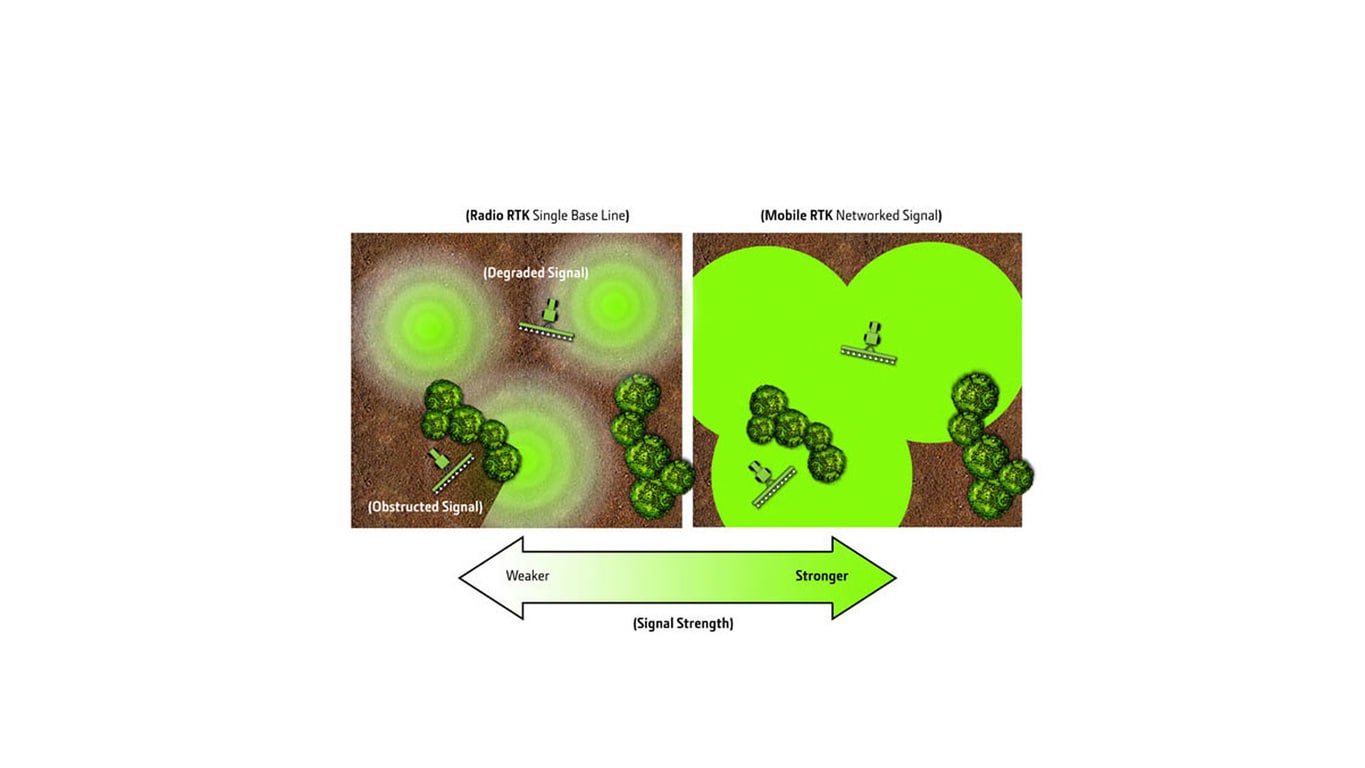
John Deere RTK Mobile
Correction Signal
- Provides +/- 1 inch pass-to-pass accuracy season after season, and year after year
- Allows you to use RTK precision in difficult areas such as hilly terrain because there is no line-of-sight requirement to the base station.
- No need to manually switch base stations as you move between fields — you can roam anywhere within the network and have access to the RTK correction signal.
- Requires a StarFire 6000 receiver, SF3 Ready Activation, RTK Ready Activation
- Requires John Deere Mobile RTK subscription
Features
The StarFire™ 6000 Receiver offers multiple differential correction signal levels to match receiver performance with the needs of the operation.
StarFire 6000 horizontal pass-to-pass accuracy:
- SF1: +/- 15 cm (5.9 in.)
- SF3: +/- 3 cm (1.2 in.)
- Radio RTK: +/- 2.5 cm (1.0 in.)
- Mobile RTK: +/- 2.5 cm (1.0 in.)
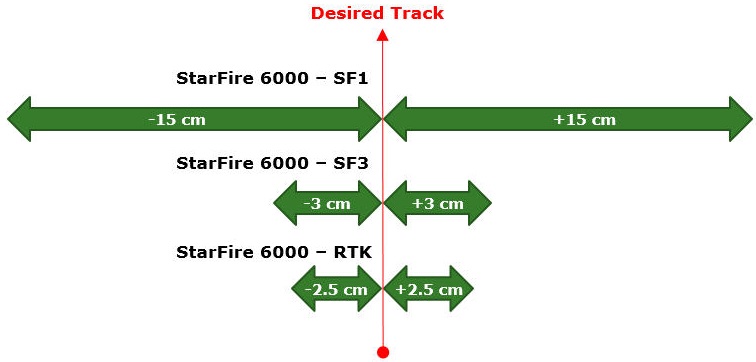 StarFire 6000 pass-to-pass accuracy
StarFire 6000 pass-to-pass accuracy
NOTE: Horizontal pass-to-pass accuracy specifications are 1D and are based upon a 15-minute time period, 95 percent confidence interval, clear view of the sky, no signal interference, no scintillation, and ideal atmospheric conditions (free from solar disturbances and other ionospheric/tropospheric activity). Performance may vary based on GNSS constellation health.
NOTE: Radio RTK horizontal accuracy specification is based on the maximum supported baseline (distance from the RTK base station) of 20 km (12 miles) and a properly installed RTK base station.
NOTE: Mobile RTK horizontal accuracy specification is based on a 20-km (12-mile) baseline (distance from the nearest network RTK base station). Performance will vary based on network geometry.
What does pass-to-pass accuracy really mean for the user?
Pass-to-pass accuracy defines how accurate the receiver is at calculating its position over a relatively short (15-minute) time window. For each point in time during that 15-minute window, a pass-to-pass error value is calculated based on the difference between the desired track spacing at the receiver and the actual track spacing based on the receiver’s calculated position. The error values for the entire 15-minute period are combined and the pass-to-pass accuracy value is defined as the 95 percent confidence interval of the data set, meaning 95 percent of the error values are less than or equal to the specification.
Pass-to-pass accuracy is measured at the receiver and does not take into account additional error sources such as AutoTrac™ control system error, ground conditions, or implement drift.
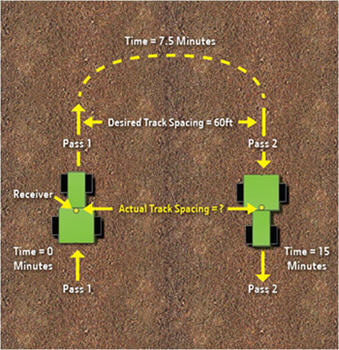 Pass-to-pass accuracy
Pass-to-pass accuracy
Pass-to-pass accuracy has a direct impact on guess-row spacing during jobs like planting, strip till, or fertilizer application, which can have a direct impact on yield potential. Guess-row spacing is also critical for operational efficiency and reducing crop damage in operations that mix implements of various widths.
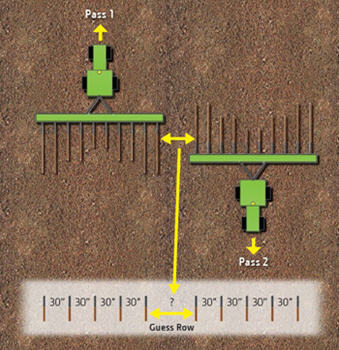 Guess-row spacing
Guess-row spacing
Pass-to-pass accuracy also has a direct impact on the amount of skip or overlap that occurs during operations like spraying, fertilizer spreading, or conventional tillage, which has a direct impact on yield potential and input costs.
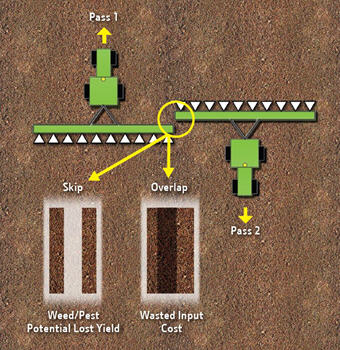 Skip/overlap
Skip/overlap
StarFire 6000 repeatability:
- SF1: no repeatability, position drifts over time
- SF3: +/- 3 cm (1.2 in.) in-season repeatability (where applicable)
- Radio RTK: +/- 2.5 cm (1.0 in.) long-term repeatability
- Mobile RTK: +/- 2.5 cm (1.0 in.) long-term repeatability (where applicable)
NOTE: Repeatability specifications are based on a 95 percent confidence interval, clear view of the sky, no signal interference, no scintillation, and ideal atmospheric conditions (free from solar disturbances and other ionospheric/tropospheric activity). Performance may vary based on GNSS constellation health.
NOTE: Radio RTK repeatability specifications are based on a properly installed RTK base station and a base station position that has not been modified after initial setup.
NOTE: Mobile RTK repeatability may be impacted by updates to network reference frames or adjustments for tectonic plate movement. Networks in some areas of California, Oregon, and Washington will be updated more frequently due to tectonic plate movement.
NOTE: SF3 repeatability specifications have been validated through at least a 9-month period. A guidance-line shift may or may not be required after a period longer than 9 months. SF3 repeatability claims are only valid after the receiver has completed a full pull in and is operating at 100 percent accuracy. SF3 repeatability may be impacted by large unpredictable geological events such as earthquakes.
NOTE: SF3 repeatability performance may vary in the locations marked No in the table below due to the unpredictable nature of local tectonic plate movement or lack of historical data to verify SF3 tectonic plate models. The StarFire 6000/SF3 system will still apply repeatability modeling and attempt to correct for tectonic plate drift in these areas unless the receiver is located very close to a tectonic plate border, but performance may vary by location:
Country |
SF3 In-season repeatability modeling verified? |
Notes |
Canada |
Yes (see notes) |
Western portion of British Columbia is not verified due to proximity to a tectonic plate boundary |
United States |
Yes (see notes) |
Locations not verified include Alaska, California, Hawaii, Oregon, and Washington due to the random nature of tectonic plate movement in those areas |
What does repeatability really mean for the operator?
Repeatability defines how accurately the receiver can calculate its position over a relatively long time window. Repeatability is measured at the receiver and does not take into account additional error sources such as AutoTrac control system error, ground conditions, or implement drift.
In-season repeatability is critical when using AutoTrac for multiple jobs throughout the growing season. One example would be creating AutoTrac guidance lines during planting, then using those same guidance lines to complete subsequent jobs such as side-dressing fertilizer, post-emerge spraying, and harvesting.
Long-term repeatability is critical when mapping interior and exterior boundaries for later use as input to John Deere Section Control on planters, sprayers, and fertilizer applicators. Long-term repeatability is also critical for growers that use the same AutoTrac guidance lines over multiple seasons for operations like subsurface-drip irrigation, controlled traffic, or alternating planter spacing between the rows from a previous season.
This solution utilizes RTK correction data from the John Deere Mobile RTK network. A machine equipped with a John Deere MTG and an active JDLink™ subscription can connect through the JDLink cellular network and John Deere Mobile RTK network to get repeatable RTK correction data wherever the coverage of both networks is available.
John Deere Mobile RTK requires:
- StarFire™ 3000 or StarFire 6000 Receiver and activations
- StarFire 3000 – SF2 Ready activation and RTK activation
- StarFire 6000 – SF3 Ready activation and RTK Ready activation
- John Deere MTG with a JDLink subscription
- John Deere Mobile RTK signal subscription
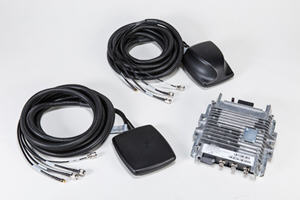 John Deere Modular Telematics Gateway (MTG)
John Deere Modular Telematics Gateway (MTG)

The John Deere Mobile RTK system leverages differential corrections delivered via cellular technology to achieve RTK accuracy and repeatability. The MTG on the machine connects to a JDLink cellular network that provides the machine access to the internet. The machine is able to access John Deere Mobile RTK corrections from the John Deere Mobile RTK network through the internet connection.
NOTE: John Deere Mobile RTK is not currently supported with the machine-to-wireless feature of MTG 4G LTE as a network connection method. A cellular connection through the MTG is required for use of John Deere Mobile RTK at this time. Further compatibility information will be communicated when available.



